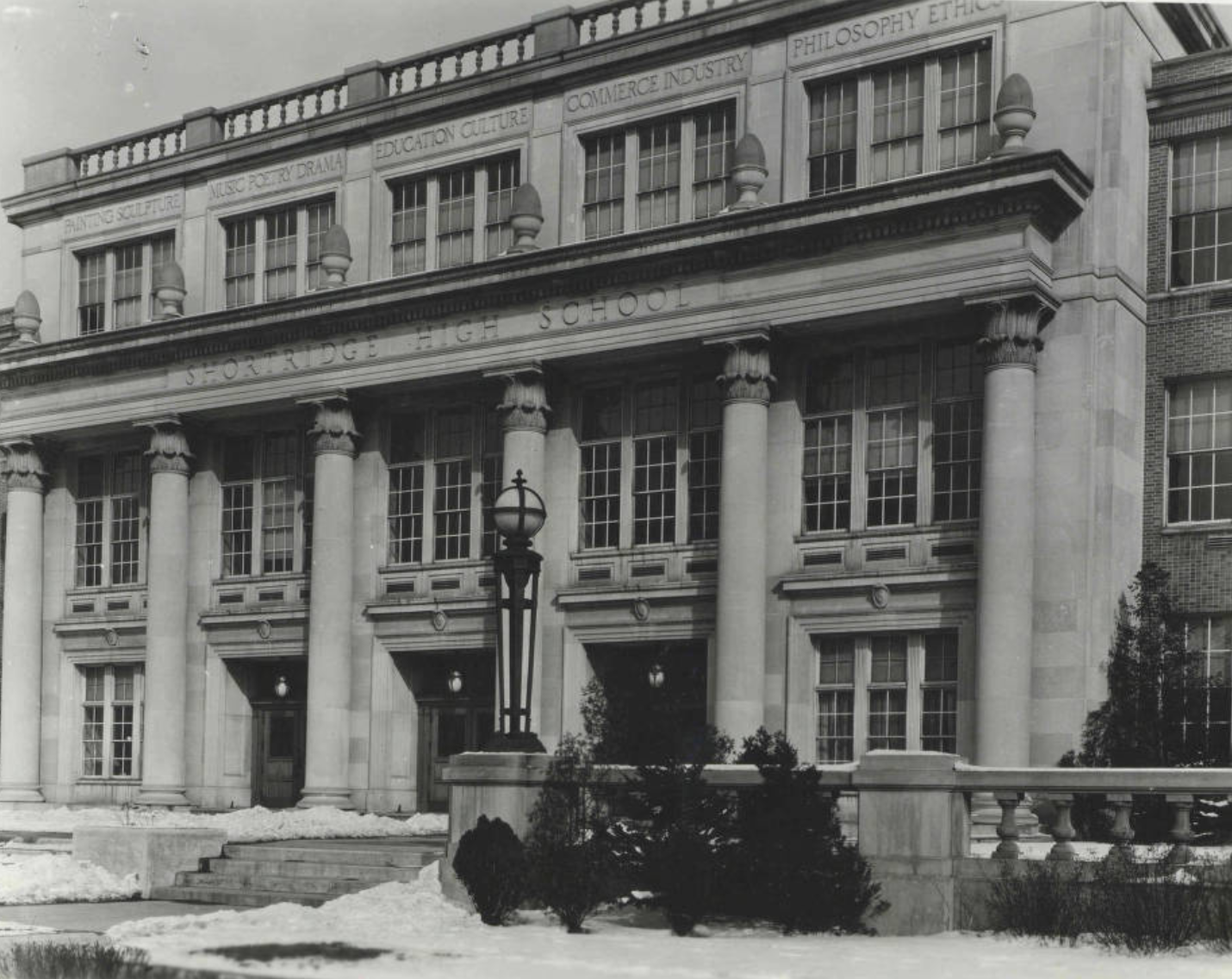Early in its history Indianapolis was dubbed the “railroad city,” because of its location at the intersection of several important rail lines. The appellation suggests a broader metaphor—Indianapolis as a crossroads and representation of American culture. This metaphor is particularly apt when applied to the development of the American high school. From the inception of Indianapolis High School (later ) in 1853 to debates over the Select Schools plan, the development and practice of secondary education in Indianapolis have mirrored and sometimes anticipated trends that spread across America.
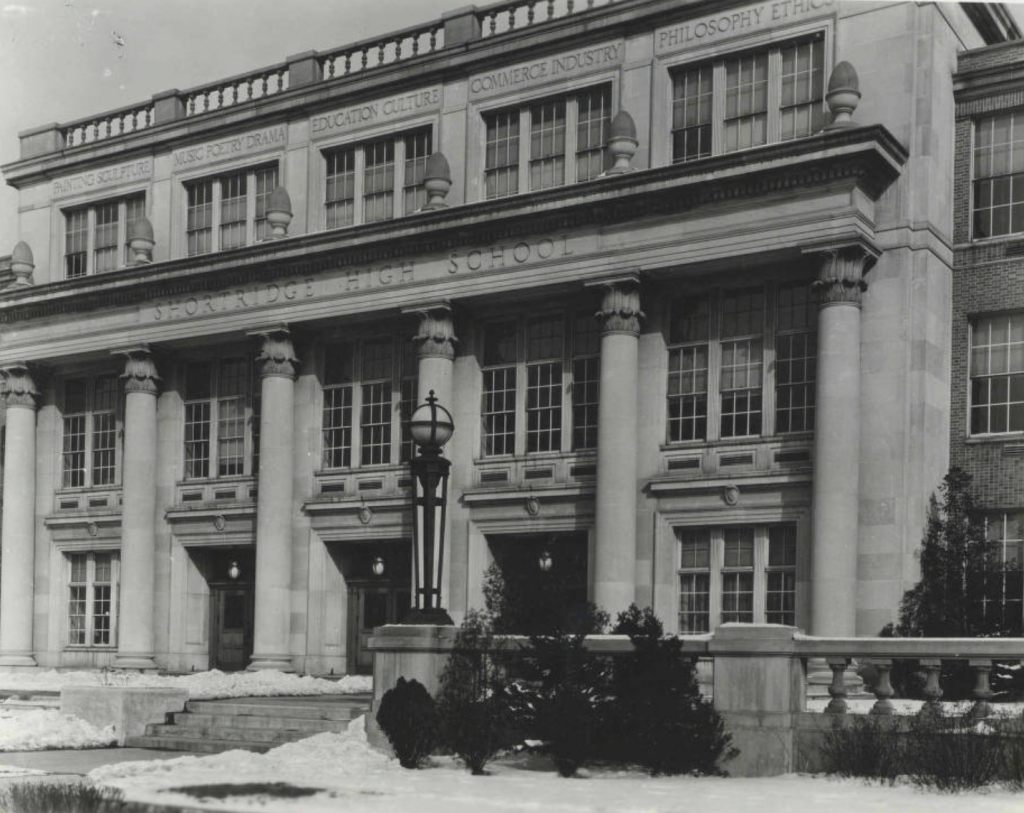
The rapid rise of the urban high school during the mid-19th century as a showplace of urban pride and civic-mindedness; the resulting intra-city battles over the establishment and placement of subsequent high schools and the burgeoning rivalry between these high schools; the battle over the curriculum and the new “needs” of students and society at the turn of the century; the rapid expansion of the high school population, curriculum, and facilities in the first two decades of the 20th century; the first wave of suburbanization as major cities rapidly expanded, requiring still more high schools; the renewed efforts to “modernize” the curriculum in the forties; the backlash against these developments in the fifties; the second wave of suburbanization in the fifties and sixties, often taking the form of “white flight,” and the use of busing to overcome the historical effects of both legal and de facto segregation; the steady decline of urban high schools in the late 20th century as they were caught in the seemingly intractable problems endemic to urban centers—these developments are all well represented in the historical development of high schools in Indianapolis. Events in Indianapolis during each of these episodes echo themes both from other American localities and from other historical periods. Stripped of their immediate context, contemporary arguments over the purpose and practice of secondary education, while sometimes original in detail, often are strikingly similar to debates of the past.
In the 1990s operated seven high schools—, , Broad Ripple, Arlington, Northwest, Howe, and Washington—with a total secondary enrollment of approximately 10,000. This number has shrunk steadily for over two decades because of demographic changes, including a declining fertility rate (one-half that of the 1950s) and rapid suburbanization. With flight to the suburbs has come a shrinking tax base, inadequate to compensate for educational problems connected to contemporary urban culture. These concerns range from purely educational to life-threatening violence. Between these extremes lies a panoply of woes, including declining SAT scores, at-risk students, lack of career opportunities, lack of parental and community involvement, disruptions in the classroom, low attendance rates, aging school plants, and inadequate finances.
Some problems, such as declining SAT scores, weapons in the schools, and lack of community involvement, represent historically new conditions. A 1993 meeting of the on a variety of governmental issues drew no attendance for an education session. This lack of interest stands in stark contrast to the community involvement of earlier decades, such as during Education Week, 1936, when over 10,000 patrons visited Arsenal Technical High School alone. Numerous recent efforts to revive community involvement are more representative of the depth of the problem than the achievement of a solution. Other contemporary issues—financial pressures, dropouts, and concern for career preparation—reflect longstanding concerns. Citizens’ groups such as the Committee for Efficient and Effective Schools, a 1990s team of business people that aided the central administration in its attempt to operate more economically, have their parallels in former eras, specifically during the battle over school funds in the 1890s and again during the .
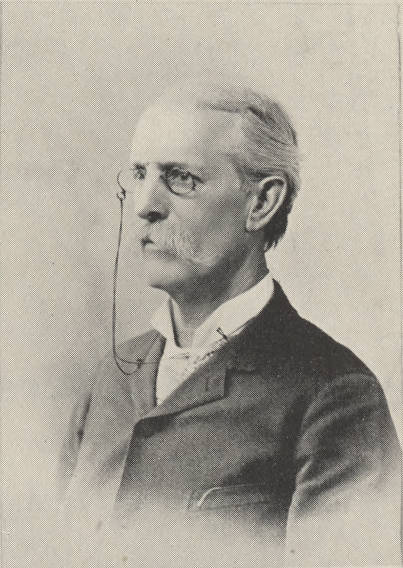
The citizens who founded Indianapolis High School in 1853 would have been bewildered by the notion that it could ever be viewed as anything but the “crowning glory” of a newly founded common school system. The high school was begun as a result of legislation that allowed incorporated towns and cities to levy taxes for the support of public education. A state Supreme Court decision in 1858, however, made such taxation illegal, and only with the appointment of as superintendent of schools in 1863 did Indianapolis High School open its doors again. Not until an 1867 reenactment of the earlier law was declared constitutional in (1885) was the legality of urban school funding assured.
While many concurred with the original negative Supreme Court decision, including William Larrabee, state Superintendent of Public Instruction in 1858, who claimed that the original legislation gave undue educational advantage to wealthier urban dwellers, most Indianapolis residents took pride in their newly formed high school. W. A. Bell, president of the school board in 1879, boasted that even the humblest citizen could get an education that would allow him “to compete even-handed in the battle of life with the child of a millionaire.” While there was some truth in this statement in terms of the quality of education available by then, few residents were able to take advantage of even a free high school education at the time. There were only 11 teachers in the high school, with an average class size of 38. Each successive year the entering class lost one quarter or more of its enrollment as many students, especially males, entered the labor force. School officials made a special effort to find part-time work for children of the poor so that they would not have to terminate their education. This combination of part-time work with high school attendance was common throughout .
By the late 19th century, the teaching staff of Indianapolis High School had developed a reputation for dedication and excellence. This reputation would grow as , , and many others became well-known figures in the community. Chemistry teacher George Benton spent his summer vacations visiting other high schools around the country to investigate their programs and innovations. Many extracurricular activities were begun at this time, including student government, the nation’s first daily student newspaper, the , athletics, and unofficial social “clubs.” These extracurricular activities and organizations combined to create a high school culture that would remain remarkably consistent well into the 20th century.
By the 1890s two connected developments altered secondary education in Indianapolis and elsewhere—the rapidly expanding high school population and the introduction of new curricular offerings spurred by a widespread interest in manual training. Superintendent L. H. Jones in his 1888 report embraced this latter trend with caution, pointing out with remarkable foresight that many of the claims for this new curriculum were overblown or specious. He then listed benefits that he thought applicable to Indianapolis, among them that manual training would develop the muscles of the arms and chest “much needed in city life,” and that it would reawaken and strengthen the virtues of self-reliance and inventiveness endangered by modern, industrial society. In Indianapolis, the was instrumental in promoting this new curricular direction, which they introduced in their own Gewerbeschule in the form of drawing and drafting. At first, they succeeded only in persuading the school board to provide them with a manual training teacher, William H. Bass. By 1888, however, Indianapolis High School had a manual training department. In 1891 special legislation authorized a special tax dedicated to the establishment of a manual training high school. This school, the Industrial Training School, was built in 1895 but soon renamed Manual Training High School because of its less negative connotations. Indianapolis High School was renamed Shortridge.
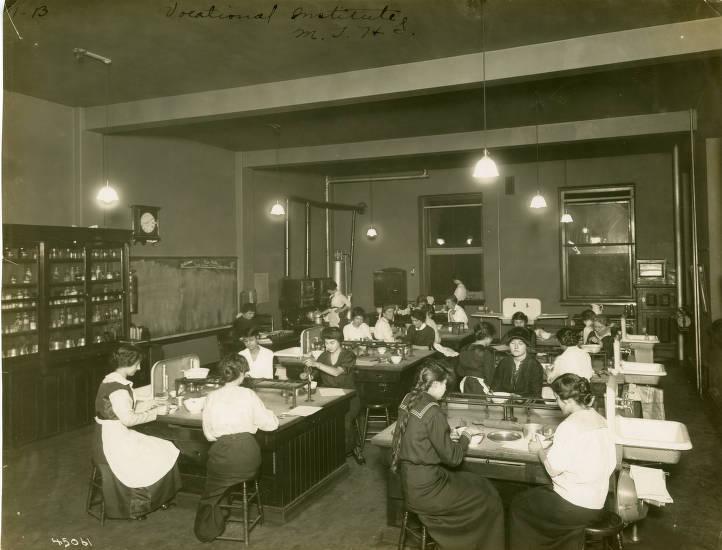
Although the establishment of the second school was justified on the basis that it met the needs of a different and increasingly diverse population, southside residents looked upon Manual as their high school rather than as a different kind of education. Manual training courses were offered, but three-fourths of the curriculum remained academic. While the new curriculum attracted students who otherwise would not have attended high school, broad social and economic trends, especially decreasing employment opportunities for youth and urbanization, combined to create a larger potential population for the high school regardless of its curricular offerings. Certainly, the residents of the south side would have vigorously protested the philosophy of H. S. Tarbell, whose superintendent’s report of 1879 called for more practical education for the “lower classes” because “if a boy is going to make a bad man, the less we do for him intellectually the better.”
The rivalry between the two high schools began almost immediately. Shortridge students wasted no time in exploiting the ideology that was responsible for the creation of their rival; one couplet referring to Manual’s colors went like this: “White and red, white and red. They’re the gals who bake the bread.” The superintendent’s report a decade later went to some length to illustrate the democratic character of the high schools by listing the number of parents in each school representing various occupations. Among bankers and brokers, 20 were parents at Shortridge and 6 at Manual. Among lawyers, 45 were parents at Shortridge and 12 at Manual. Thirty-five physicians were parents at Shortridge, 16 at Manual. Ironically, this listing of occupations illustrated the potential for breaking down social barriers within schools, but it also revealed the social and economic distance between the two schools.
The differing emphases between Shortridge and Manual emerge in the respective principals’ reports for 1909. George Benton’s report for Shortridge pointedly referred to more academically rigorous course offerings aimed at preparing students for college. Manual training still offered at Shortridge had become a craft and drawing activity rather than a technical-industrial preparation. Benton also emphasized the renewed interest in Latin and claimed that physics was the proper bridge between academic and “real” life—making a comparison with Manual, where shop classes fulfilled this function. For his report, Manual principal emphasized that high school should be only incidentally preparatory for college. Yet his larger educational goals were the same as those claimed by Shortridge: to get students to think clearly and reason logically. He also made a point of the need for English classes to develop clear, unadorned expressions rather than “special graces of literary skill.” Despite similar concerns, the two schools represented different and at times antagonistic cultures, as witnessed in the heated football rivalry between them, a rivalry so intense that it was abandoned after a 1907 match between them resulted in a riot.

Overcapacity from its opening, Manual, as well as Shortridge, continued to expand. The period around 1900 was one of great activism among Indianapolis schoolmen, many of whom were also members of the Commercial Club (see ). While the population of the city grew by 19 percent, school expenditures increased 66 percent. When the former United States Arsenal property became available in 1909, the school board eagerly sought it for a third city high school. Begun provisionally in 1912 and officially in 1916, Arsenal Technical High School soon eclipsed both Shortridge and Manual in terms of growth. By 1910 the original manual training concept had evolved into a more explicitly vocational approach to education. “Tech” took full advantage of this new concept, expressed nationally in the Seven Cardinal Principles of Secondary Education report issued by the National Education Association in 1918. High schools were now to promote social efficiency. They were to assess the strengths, weaknesses, and needs of their students scientifically and structure the curriculum accordingly. What they found were thousands of potential students who “needed” sheet metal and barbering courses rather than Virgil. Tech flourished on this discovery. By 1926 there were over 5,000 students; by 1940, 7,539. In 1912 there were 16 courses; by 1948 there were 413. Milo Stuart, Tech’s first principal, helped to create one of the nation’s premier “comprehensive” high schools, a concept he outlined in a book and which persists as the model for high schools today—although no longer on such a grand scale. While Tech based its growth on the wide variety of vocational courses, it also offered, just as Manual had previously, an academic program comparable to that of crosstown rival Shortridge. Tech has graduated many who have distinguished themselves in nontechnical careers. Its rivalry with Shortridge is immortalized in Indianapolis native Dan Wakefield’s novel, .
The 1920s and 1930s marked the zenith of high school expansion, with the annexation of Broad Ripple (1923), the addition of George Washington High School (1927), and the construction of Crispus Attucks (1927) and Thomas Carr Howe (1938). In 1920 only about one-third of all 14-to 17-year-olds were in high school. By 1930 this group increased to one-half and by 1940 to three-fourths. As Indianapolis expanded, the west, north, and east sides demanded separate high schools just as the south side had done earlier. The need was obvious: when Washington was built, 670 westside students were commuting to one of the three existing high schools.
During the years of the Great Depression, all of the city’s high schools were severely overcrowded as students unable to find employment continued their schooling. Shortridge and Tech even had postgraduate students. Despite the overcrowding, the desire to expand educational opportunities remained strong. In 1933 a school survey completed under the supervision of Tech principal Milo Stuart recommended the further expansion of the curriculum to meet the needs of the expanded school population, a reversal (and result) of the previous policy of expanding the curriculum to attract a larger population.
Life adjustment education found its way into Indianapolis high schools in the 1940s as it did across the nation. This was the apotheosis of the curricular expansion begun earlier in the century. Where academic preparation had made way for vocational training, now was no longer considered appropriate for everyone. Nonacademic students were offered “general” courses that would prepare them for life. The 1950s saw a continuation of this policy in the form of the “Four Diploma Plan.” Initiated in 1958, this plan created separate high school programs, with academic, fine and practical arts, vocational, and general orientations. A major emphasis was to limit the number of electives that could be taken, especially for the academic diploma. Anyone who could not maintain a C-average or take a sufficient number of traditional core courses would receive a diploma stamped “general” so that employers could readily see what level of training the student had received.
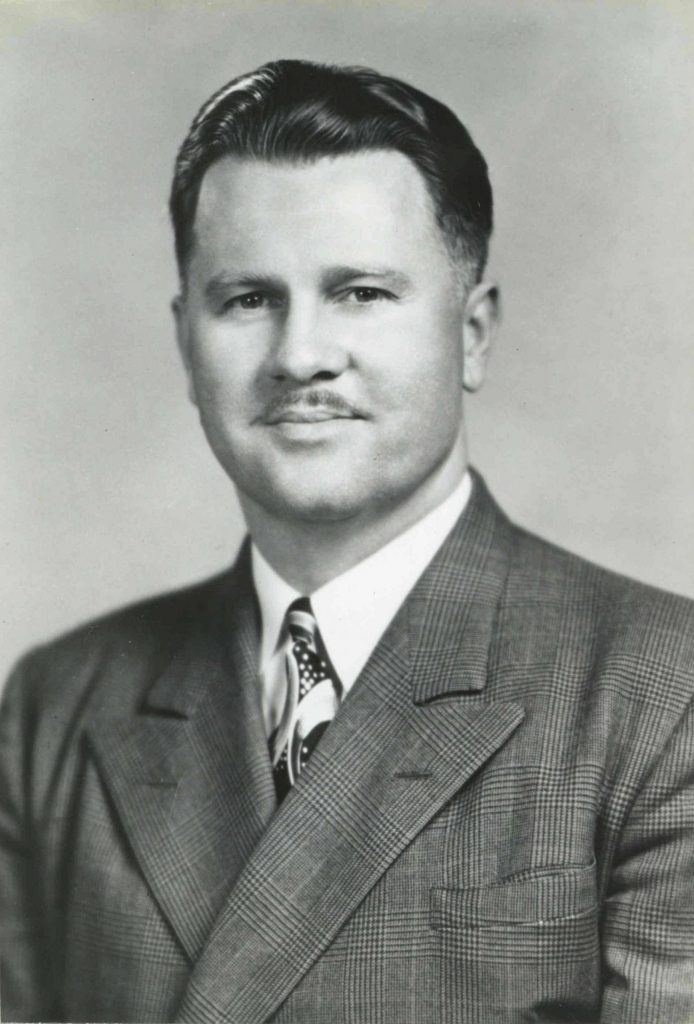
Vocationalism also peaked during the fifties with the conversion of the former Manual building into the . Its first principal, Dick Emery, known to students as “Big Daddy,” maintained that a society that carefully sorted and graded everything from olives to cars should also be doing this with high school graduates. Students who could not get a traditional diploma were given certificates of vocational competence in areas such as cleaning and pressing, cosmetology, fountaineering, shoe rebuilding, and greenhouse production. He assembled a teaching staff who he said were willing to “love the unlovely.”
It was also during the fifties that first steps were taken toward desegregating the nation’s schools, beginning with the 1954 U.S. Supreme Court case Brown V. Board of Education of Topeka, Kansas. Indianapolis had a checkered past in terms of school segregation. While an 1869 state law provided for separate schools for Blacks, in 1871 Superintendent Shortridge personally escorted an African American student, Mary Ann Rann, to Indianapolis High School in defiance of existing law. H. S. Tarbell in his superintendent’s report of 1879 spoke highly of the “colored population’s” eagerness to learn in night schools—a desire he did not see in many of the white youths who attended.
Even though the idea of a separate Black high school was raised at a school board meeting in 1908, Blacks continued to attend city high schools, representing as much as 15 percent of the student population at Shortridge, until the school board created a separate Black high school in 1927. opened with 1,350 students and a distinguished faculty some of whom had Ph.Ds. There was considerable pride in the Black community for Attucks during these early years even though it had been initially forced upon them. From 1927 until 1949, when the state legislature prohibited legal segregation, Blacks in Indianapolis were required to attend Attucks regardless of how far away they lived or of their need for a special program available at another high school.
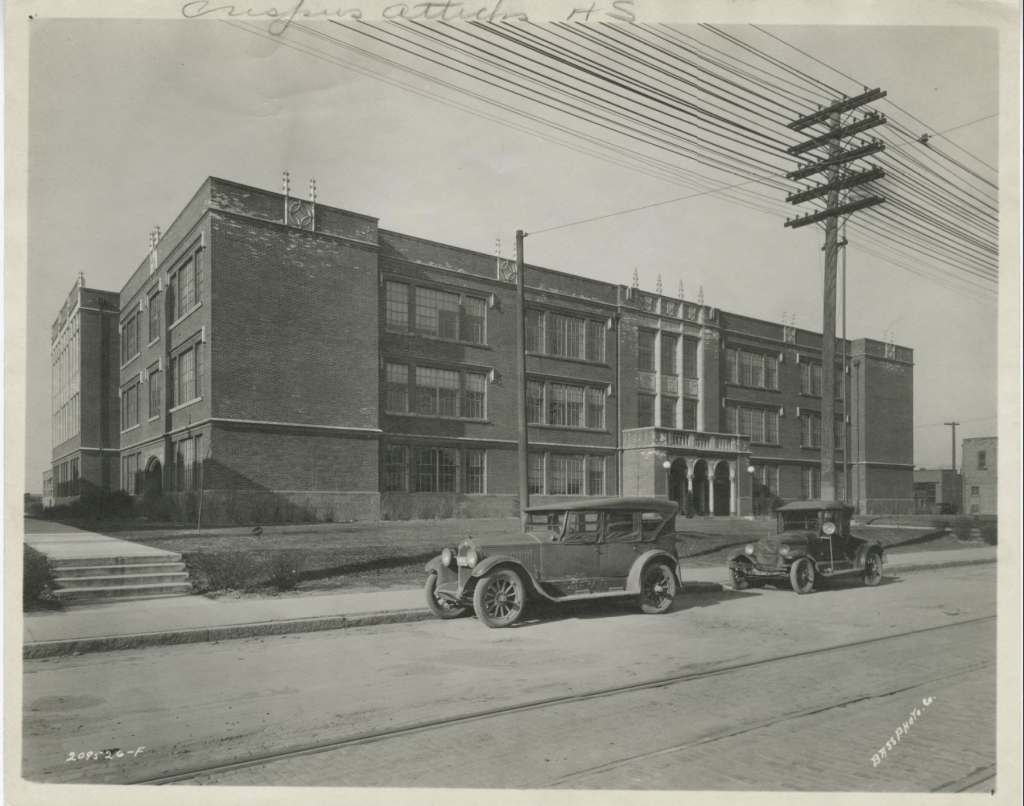
Although legal segregation was eliminated with the 1949 law, de facto segregation continued as whites fled to the suburbs, first to the newly constructed Arlington, Northwest, and Marshall high schools, and then to outlying township schools as court-ordered busing and demographic shifts altered the racial balance at Indianapolis schools in the 1970s. Datasheets prepared for each high school and neighborhood by the High School Facilities Task Force illustrate the failure of the Indianapolis desegregation plan. Arlington in 1971 was 32 percent Black, with a total population of 3,287 and an attendance rate of 92 percent. By 1980 these figures had changed to 71 percent, 2,022, and 80 percent, respectively. To a greater or lesser degree, all schools showed this surge in Black school population, a reduction in the white (total) population, and a decline in attendance rate. The schools increasingly became troubled by violence and apathy.
Subsequent attempts to improve the city high schools failed to reverse the racial imbalance. The decline of Shortridge in the 1960s prompted the “Shortridge Plan,” which designated the high school as academic. This plan improved the racial balance somewhat but at the expense of other city high schools. It resulted more in denying access to neighborhood Blacks to the schools than it caused whites to reenter from outlying areas. Similarly, magnet programs tended to concentrate whites in several schools, doing little to alleviate overall racial imbalance. Nor did busing help, since it transported students only one way— Blacks to outlying districts.
The next scheme to combat the many problems of urban high schools, the Select Schools plan launched in 1992, seemed to ignore the issue of de facto segregation. The goals of this choice plan were laudable—parental involvement, student commitment, and educational excellence. While it allowed for reconnection of neighborhood and school, it continued to offer magnets and school specialties such as the “MindBody Program” at Washington and the “Agricultural Science Program” at Manual.
Select Schools followed in the footsteps of many other reform efforts in the history of Indianapolis high schools. All have claimed to meet the needs of students while at the same time better serving the interests of the community. Since the latter part of the last century, all have spoken the language of business efficiency and the need to train an increasingly specialized workforce. Finally, all have dutifully responded to the suggestion that the problems of society follow from deficiencies in the schools.
*Note: This entry is from the original print edition of the Encyclopedia of Indianapolis (1994). We are currently seeking an individual with knowledge of this topic to update this entry.

Help improve this entry
Contribute information, offer corrections, suggest images.
You can also recommend new entries related to this topic.
